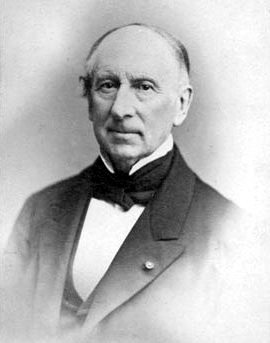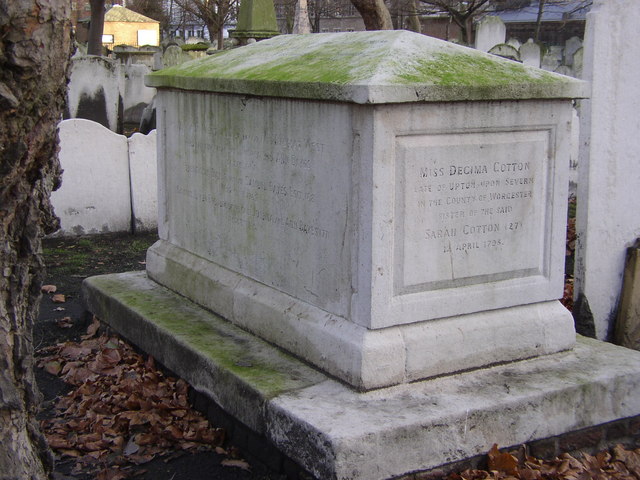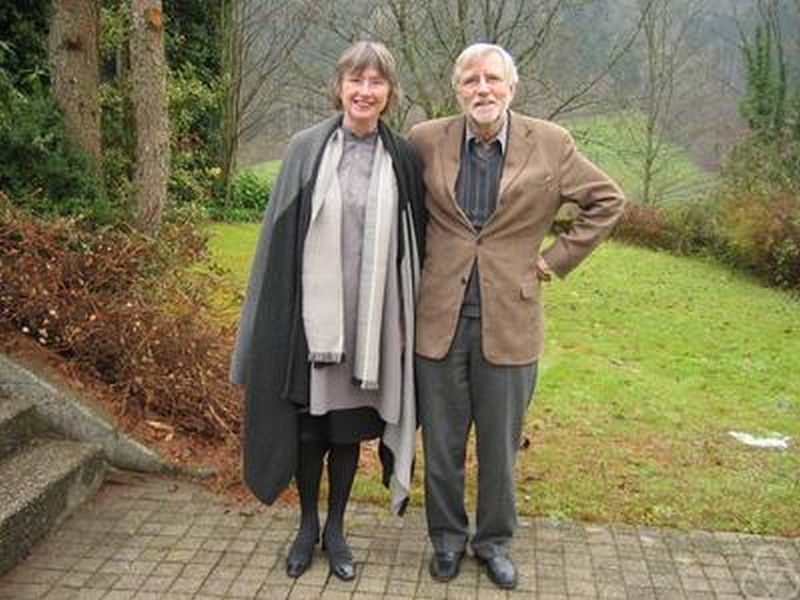|
The Analyst
''The Analyst'' (subtitled ''A Discourse Addressed to an Infidel Mathematician: Wherein It Is Examined Whether the Object, Principles, and Inferences of the Modern Analysis Are More Distinctly Conceived, or More Evidently Deduced, Than Religious Mysteries and Points of Faith'') is a book by George Berkeley. It was first published in 1734, first by J. Tonson (London), then by S. Fuller (Dublin). The "infidel mathematician" is believed to have been Edmond Halley, though others have speculated Sir Isaac Newton was intended. The book contains a direct attack on the foundations of calculus, specifically on Isaac Newton's notion of Method of Fluxions, fluxions and on Gottfried Leibniz, Leibniz's notion of infinitesimal change. Background and purpose From his earliest days as a writer, Berkeley had taken up his satirical pen to attack what were then called 'free-thinkers' (secularists, sceptics, agnostics, atheists, etc.—in short, anyone who doubted the truths of received Christi ... [...More Info...] [...Related Items...] OR: [Wikipedia] [Google] [Baidu] |
George Berkeley
George Berkeley ( ; 12 March 168514 January 1753), known as Bishop Berkeley (Bishop of Cloyne of the Anglican Church of Ireland), was an Anglo-Irish philosopher, writer, and clergyman who is regarded as the founder of "immaterialism", a philosophical theory he developed which was later referred to as "subjective idealism" by others. As a leading figure in the empiricism movement, he was one of the most cited philosophers of Age of Enlightenment, 18th-century Europe, and his works had a profound influence on the views of other thinkers, especially Immanuel Kant and David Hume. Interest in his ideas increased significantly in the United States during the early 19th century, and as a result, the University of California, Berkeley, as well as the city of Berkeley, California, were both named after him. In 1709, Berkeley published his first major work ''s:An Essay Towards a New Theory of Vision, An Essay Towards a New Theory of Vision'', in which he discussed the limitations of huma ... [...More Info...] [...Related Items...] OR: [Wikipedia] [Google] [Baidu] |
Diagonal
In geometry, a diagonal is a line segment joining two vertices of a polygon or polyhedron, when those vertices are not on the same edge. Informally, any sloping line is called diagonal. The word ''diagonal'' derives from the ancient Greek διαγώνιος ''diagonios'', "from corner to corner" (from διά- ''dia-'', "through", "across" and γωνία ''gonia'', "corner", related to ''gony'' "knee"); it was used by both Strabo and Euclid to refer to a line connecting two vertices of a rhombus or cuboid, and later adopted into Latin as ''diagonus'' ("slanting line"). Polygons As applied to a polygon, a diagonal is a line segment joining any two non-consecutive vertices. Therefore, a quadrilateral has two diagonals, joining opposite pairs of vertices. For any convex polygon, all the diagonals are inside the polygon, but for re-entrant polygons, some diagonals are outside of the polygon. Any ''n''-sided polygon (''n'' ≥ 3), convex or concave, has \tfrac ''total'' ... [...More Info...] [...Related Items...] OR: [Wikipedia] [Google] [Baidu] |
Karl Weierstrass
Karl Theodor Wilhelm Weierstrass (; ; 31 October 1815 – 19 February 1897) was a German mathematician often cited as the " father of modern analysis". Despite leaving university without a degree, he studied mathematics and trained as a school teacher, eventually teaching mathematics, physics, botany and gymnastics. He later received an honorary doctorate and became professor of mathematics in Berlin. Among many other contributions, Weierstrass formalized the definition of the continuity of a function and complex analysis, proved the intermediate value theorem and the Bolzano–Weierstrass theorem, and used the latter to study the properties of continuous functions on closed bounded intervals. Biography Weierstrass was born into a Roman Catholic family in Ostenfelde, a village near Ennigerloh, in the Province of Westphalia. Karl Weierstrass was the son of Wilhelm Weierstrass and Theodora Vonderforst, the former of whom was a government official and both of whom were Cat ... [...More Info...] [...Related Items...] OR: [Wikipedia] [Google] [Baidu] |
Bernhard Riemann
Georg Friedrich Bernhard Riemann (; ; 17September 182620July 1866) was a German mathematician who made profound contributions to analysis, number theory, and differential geometry. In the field of real analysis, he is mostly known for the first rigorous formulation of the integral, the Riemann integral, and his work on Fourier series. His contributions to complex analysis include most notably the introduction of Riemann surfaces, breaking new ground in a natural, geometric treatment of complex analysis. His 1859 paper on the prime-counting function, containing the original statement of the Riemann hypothesis, is regarded as a foundational paper of analytic number theory. Through his pioneering contributions to differential geometry, Riemann laid the foundations of the mathematics of general relativity. He is considered by many to be one of the greatest mathematicians of all time. Early years Riemann was born on 17 September 1826 in Breselenz, a village near Danne ... [...More Info...] [...Related Items...] OR: [Wikipedia] [Google] [Baidu] |
Augustin Cauchy
Baron Augustin-Louis Cauchy ( , , ; ; 21 August 1789 – 23 May 1857) was a French mathematician, engineer, and physicist. He was one of the first to rigorously state and prove the key theorems of calculus (thereby creating real analysis), pioneered the field complex analysis, and the study of permutation groups in abstract algebra. Cauchy also contributed to a number of topics in mathematical physics, notably continuum mechanics. A profound mathematician, Cauchy had a great influence over his contemporaries and successors; Hans Freudenthal stated: : "More concepts and theorems have been named for Cauchy than for any other mathematician (in elasticity alone there are sixteen concepts and theorems named for Cauchy)." Cauchy was a prolific worker; he wrote approximately eight hundred research articles and five complete textbooks on a variety of topics in the fields of mathematics and mathematical physics. Biography Youth and education Cauchy was the son of Loui ... [...More Info...] [...Related Items...] OR: [Wikipedia] [Google] [Baidu] |
Geometry
Geometry (; ) is a branch of mathematics concerned with properties of space such as the distance, shape, size, and relative position of figures. Geometry is, along with arithmetic, one of the oldest branches of mathematics. A mathematician who works in the field of geometry is called a ''List of geometers, geometer''. Until the 19th century, geometry was almost exclusively devoted to Euclidean geometry, which includes the notions of point (geometry), point, line (geometry), line, plane (geometry), plane, distance, angle, surface (mathematics), surface, and curve, as fundamental concepts. Originally developed to model the physical world, geometry has applications in almost all sciences, and also in art, architecture, and other activities that are related to graphics. Geometry also has applications in areas of mathematics that are apparently unrelated. For example, methods of algebraic geometry are fundamental in Wiles's proof of Fermat's Last Theorem, Wiles's proof of Fermat's ... [...More Info...] [...Related Items...] OR: [Wikipedia] [Google] [Baidu] |
Colin Maclaurin
Colin Maclaurin (; ; February 1698 – 14 June 1746) was a Scottish mathematician who made important contributions to geometry and algebra. He is also known for being a child prodigy and holding the record for being the youngest professor. The Maclaurin series, a special case of the Taylor series, is named after him. Owing to changes in orthography since that time (his name was originally rendered as M'Laurine), his surname is alternatively written MacLaurin. Early life Maclaurin was born in Kilmodan, Argyll. His father, John Maclaurin, minister of Glendaruel, died when Maclaurin was in infancy, and his mother died before he reached nine years of age. He was then educated under the care of his uncle, Daniel Maclaurin, minister of Kilfinan. A child prodigy, he entered university at age 11. Academic career At eleven, Maclaurin, a child prodigy at the time, entered the University of Glasgow. He graduated Master of Arts three years later by defending a thesis on ''the Power ... [...More Info...] [...Related Items...] OR: [Wikipedia] [Google] [Baidu] |
Thomas Bayes
Thomas Bayes ( , ; 7 April 1761) was an English statistician, philosopher and Presbyterian minister who is known for formulating a specific case of the theorem that bears his name: Bayes' theorem. Bayes never published what would become his most famous accomplishment; his notes were edited and published posthumously by Richard Price. Biography Thomas Bayes was the son of London Presbyterian minister Joshua Bayes, and was possibly born in Hertfordshire. He came from a prominent Nonconformist (Protestantism), nonconformist family from Sheffield. In 1719, he enrolled at the University of Edinburgh to study logic and theology. On his return around 1722, he assisted his father at the latter's chapel in London before moving to Royal Tunbridge Wells, Tunbridge Wells, Kent, around 1734. There he was minister of the Mount Sion Chapel, until 1752. He is known to have published two works in his lifetime, one theological and one mathematical: #''Divine Benevolence, or an Attempt to P ... [...More Info...] [...Related Items...] OR: [Wikipedia] [Google] [Baidu] |
Kirsti Andersen
Kirsti Andersen (born December 9, 1941, Copenhagen), published under the name Kirsti Pedersen, is a Danish historian of mathematics. She is an Associate Professor of the History of Science at Aarhus University, where she had her Candidate examination in 1967. Work Andersen has written on the early history of mathematical analysis (for example, Cavalieri and Roberval). She has also written extensively on the history of graphical perspective. In a 1985 article she related the science of perspective as described by Simon Stevin, Frans van Schooten, Willem 's Gravesande, Brook Taylor, and Johann Heinrich Lambert. In a 1987 article she examined the ancient roots of linear perspective as found in Euclid's Optics and Ptolemy (Geography and Planisphaerium). In 1991 she recalled Desargues’ method of perspective. In 1992 her book on Brook Taylor appeared, and she wrote on the alternative "plan and elevation technique". In 2007 her '' The Geometry of an Art'' provided a compre ... [...More Info...] [...Related Items...] OR: [Wikipedia] [Google] [Baidu] |
Empiricism
In philosophy, empiricism is an epistemological view which holds that true knowledge or justification comes only or primarily from sensory experience and empirical evidence. It is one of several competing views within epistemology, along with rationalism and skepticism. Empiricists argue that empiricism is a more reliable method of finding the truth than purely using logical reasoning, because humans have cognitive biases and limitations which lead to errors of judgement. Empiricism emphasizes the central role of empirical evidence in the formation of ideas, rather than innate ideas or traditions. Empiricists may argue that traditions (or customs) arise due to relations of previous sensory experiences. Historically, empiricism was associated with the " blank slate" concept (''tabula rasa''), according to which the human mind is "blank" at birth and develops its thoughts only through later experience. Empiricism in the philosophy of science emphasizes evidence, especi ... [...More Info...] [...Related Items...] OR: [Wikipedia] [Google] [Baidu] |
David Sherry (philosopher)
David M. Sherry (B.A., University of Montana, 1974; Ph.D., Claremont Graduate School, 1982) is a philosopher and professor at Northern Arizona University in Flagstaff, Arizona. He teaches History of Philosophy, History of Logic, as well as Philosophy of Mathematics Philosophy of mathematics is the branch of philosophy that deals with the nature of mathematics and its relationship to other areas of philosophy, particularly epistemology and metaphysics. Central questions posed include whether or not mathem .... He has published on Logic, Philosophy of Mathematics and Philosophy of Science. Selected publications * * * * * * External links * http://cas.umt.edu/math/documents/newsletter/newsletter_2001-s.pdf {{DEFAULTSORT:Sherry, David American philosophers 20th-century American philosophers Northern Arizona University faculty Living people Year of birth missing (living people) ... [...More Info...] [...Related Items...] OR: [Wikipedia] [Google] [Baidu] |
Judith Grabiner
Judith Victor Grabiner (born October 12, 1938) is an American mathematician and historian of mathematics, who is Flora Sanborn Pitzer Professor Emerita of Mathematics at Pitzer College, one of the Claremont Colleges. Her main interest is in mathematics in the eighteenth and nineteenth centuries. Education Grabiner completed a Bachelor of Science degree at the University of Chicago in 1960. She was a graduate student in the history of science at Harvard University, completing a Master of Arts in 1962 and a Ph.D. in 1966, under I. Bernard Cohen. Her PhD dissertation was on Italian mathematician Joseph-Louis Lagrange. Career Grabiner was an instructor at Harvard for several years, before she and her husband Sandy Grabiner moved to California. She was a professor of history at California State University, Dominguez Hills from 1972 to 1985. Grabiner joined the mathematics department at Pitzer College in 1985, and has been the Flora Sanborn Pitzer Professor of Mathematics since ... [...More Info...] [...Related Items...] OR: [Wikipedia] [Google] [Baidu] |






